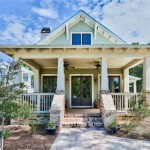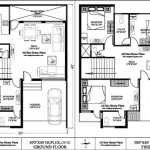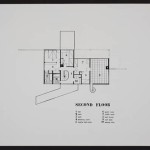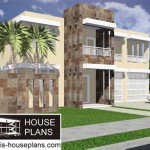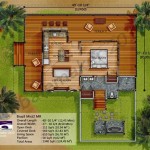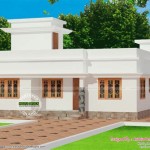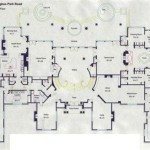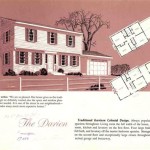Simple Mountain House Floor Plans
Mountain house floor plans prioritize functionality, durability, and integration with the surrounding environment. Simplicity in design often translates to cost-effectiveness in construction and maintenance. This article explores the key aspects of simple mountain house floor plans, highlighting considerations for layout, features, and material choices.
Key Considerations for Mountain House Layouts
Efficient use of space is paramount in mountain house designs. Layouts often incorporate open-plan concepts to maximize natural light and create a sense of spaciousness. Consider the following:
- Prioritize views: Optimize window placement to capture scenic vistas.
- Vertical layouts: Multi-story designs minimize footprint and maximize views from upper levels.
- Main level living: Concentrate essential living spaces on the main floor for convenient access.
- Mudrooms and storage: Designate ample space for gear and outdoor equipment.
- Covered entryways and porches: Protect from harsh weather and provide outdoor living space.
Essential Features of a Simple Mountain Home
Simplicity doesn't equate to a lack of features. Rather, it emphasizes thoughtful inclusion of elements that enhance functionality and comfort. Key features may include:
- Fireplace: A central fireplace provides warmth and ambiance.
- Large windows: Maximize natural light and showcase surrounding views.
- Durable flooring: Choose materials that can withstand heavy use and moisture.
- Efficient kitchen: Optimize layout for meal preparation and storage.
- Comfortable bedrooms: Prioritize cozy spaces for relaxation and rest.
Material Choices for Mountain Homes
Material selections contribute significantly to both the aesthetic and structural integrity of a mountain home. Durability and resistance to weather elements are crucial factors. Consider the following materials:
- Wood: Natural wood siding offers insulation and a classic mountain aesthetic.
- Stone: Stone accents and foundations provide durability and blend with the natural surroundings.
- Metal roofing: Metal roofs are long-lasting and shed snow effectively.
- Energy-efficient windows: Minimize heat loss and reduce energy costs.
- Insulation: Proper insulation is vital for comfort and energy efficiency in varying climates.
One-Story Mountain House Plans
One-story designs offer convenient accessibility and are well-suited for individuals seeking to avoid stairs. These layouts often feature open-plan concepts to maximize space and natural light. Considerations for one-story plans include:
- Expansive layouts: Maximize living space within a single floor.
- Outdoor access: Integrate patios and decks for seamless indoor-outdoor living.
- Consider lot size and topography: Ensure the design complements the site.
- Attached garages: Provide convenient access and protect vehicles from the elements.
Two-Story Mountain House Plans
Two-story designs offer greater flexibility in terms of layout and can accommodate more bedrooms and bathrooms. The upper level often provides stunning views while the lower level can be dedicated to utility and storage. Considerations for two-story plans include:
- Upper-level primary suites: Maximize privacy and capitalize on views.
- Lower-level walkouts: Leverage sloping terrain to create accessible outdoor spaces.
- Staircase placement: Optimize flow and access between levels.
- Balconies and decks: Expand living space and enhance outdoor enjoyment.
Small Mountain House Plans
Small mountain house plans emphasize efficiency and affordability. These designs are ideal for individuals or couples seeking a cozy retreat. Considerations for small plans include:
- Multi-functional spaces: Optimize space utilization with combined living and dining areas.
- Loft spaces: Utilize vertical space for sleeping areas or storage.
- Minimalist design: Prioritize essential furnishings and avoid clutter.
- Smart storage solutions: Maximize storage capacity with built-in shelving and cabinets.
Cabin-Style Mountain House Plans
Cabin-style designs evoke a rustic charm and often incorporate natural materials like wood and stone. These plans prioritize cozy interiors and connection with the surrounding environment. Considerations for cabin-style plans include:
- Exposed beams and wood accents: Enhance the rustic aesthetic.
- Large fireplaces: Provide warmth and a focal point.
- Screened porches: Enjoy outdoor living while protected from insects.
- Simple, functional layouts: Prioritize comfort and ease of movement.
Incorporating Sustainable Design
Sustainable design principles can be seamlessly integrated into mountain house plans. These practices minimize environmental impact and reduce long-term operating costs. Key sustainable features include:
- Solar panels: Harness solar energy for electricity generation.
- Rainwater harvesting: Collect rainwater for irrigation and non-potable water uses.
- Energy-efficient appliances: Reduce energy consumption and lower utility bills.
- Passive solar design: Optimize window placement and building orientation for natural heating and cooling.

3 Story Open Mountain House Floor Plan Asheville Plans

Rustic Mountain House Floor Plan With Walkout Basement Plans Ranch Style

Clark Mountain 3 Bed 2 Bath 1 Story 2104 Sq Ft Appalachian Log Timber Homes Hybrid Home Flo Floor Plans Cabin Small House

Mountain Plan 3 959 Square Feet 4 Bedrooms 5 Bathrooms 5829 00002

Rustic House Plans Mountain Home Floor Plan Designs

Mountain Plan 4 964 Square Feet 5 Bedrooms Bathrooms 5829 00025

Contemporary Mountain House Plan With 4 6 Bedrooms 90318pd Architectural Designs Plans

House Plan 5 Bedrooms 3 Bathrooms Garage 3912 Drummond Plans

House Plan 5829 00004 Mountain Rustic 3 738 Square Feet 4 Bedrooms 5 Bathrooms Plans Country

3 Bed Modern Mountain Home Plan With Front Balconies 490042nah Architectural Designs House Plans

